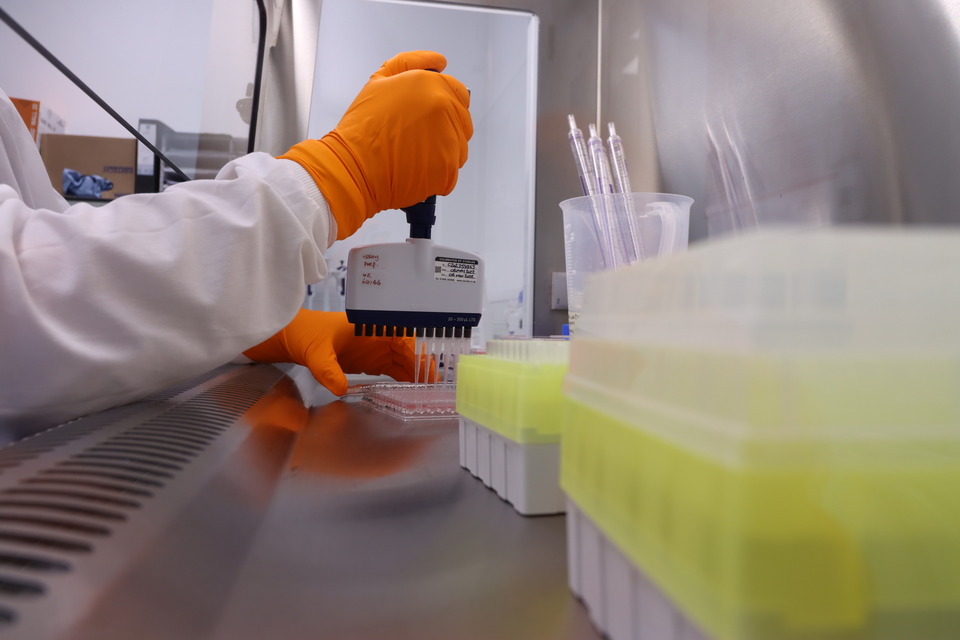Pre-clinical vaccine evaluation
The pre-clinical evaluation team at VDEC provides a safe and controlled environment to test new vaccines and therapeutics before they progress to clinical trials
The Vaccine Development and Evaluation Centre (VDEC) supports scientists at every stage of the vaccine and therapeutic development process.
VDEC’s pre-clinical evaluation team provides animal modelling capability to support the vaccine development pathway. This creates a safe and controlled environment to test new vaccines before starting human trials.
Speak to our pre-clinical evaluation team
We work with industry, academia and government. Contact UKHSA today to see how we can help you.
What the pre-clinical evaluation team does
We offer 3 main capabilities. These are:
- an ability to handle a wide range of species; from small rodents up to non-human primates (NHP), with the latter sourced from UKHSA-owned rhesus and cynomolgus macaque colonies
- accreditation to perform infectious disease research at high-containment biosafety levels (BSL) levels 3 and 4, for both operator (Advisory Committee on Dangerous Pathogens: ACDP) and environmental (Specified Animal Pathogen Order: SAPO) protection
- an enhanced quality management system suitable for good laboratory practice (GLP) and good manufacturing practice (GMP) compliance
These capabilities support the generation of data from early-stage experiments through to pivotal studies. They assure data quality and integrity for submission to regulatory agencies where required.
Current priorities
We are currently establishing pre-clinical models and assays to assess the efficacy of vaccines and antivirals against circulating strains of highly pathogenic avian influenza (H5N1).
We are also developing:
- assays and small animal models for respiratory syncytial virus (RSV), to enable evaluation of deployed vaccines and to assess future products
- a respiratory infection model for antimicrobial resistance (AMR) priority pathogen Pseudomonas aeruginosa and will use this model to analyse therapeutic regimens versus standard care antibiotic therapy
Case study: ‘organ-on-a-chip’
See how the pre-clinical team use ‘organ-on-a-chip’ models to study infections and immune responses, aiming to improve vaccine testing and reduce reliance on animal research.
Microphysiological systems: how ‘organ on a chip’ technology is changing science
How we work with partners
We engaged with internal and external stakeholders to identify priorities for pandemic preparedness and tackling AMR. We will also continue to work closely with organisations such as CEPI to develop models and assays for priority pathogens in support of the 100 Days Mission.

Scientist conducting an assay
Updates to this page
-
Added the organ on a chip case study.
-
Added the VDEC form link.
-
First published.